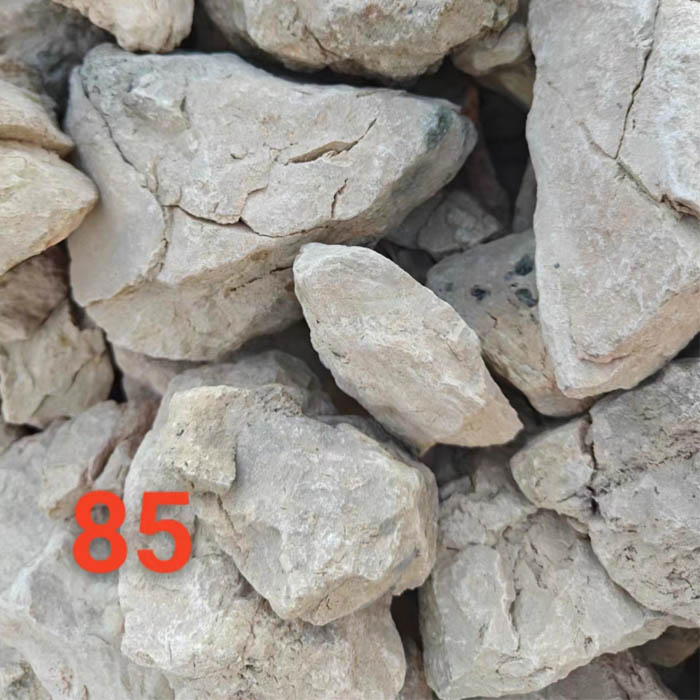dec . 04, 2024 18:06 Back to list
aluminium silicate refractory materials
Aluminium Silicate Refractory Materials Properties and Applications
Refractory materials are essential in industries that involve high-temperature processes, such as metallurgy, glass, ceramics, and cement production. Among the various types of refractory materials available, aluminium silicate refractories hold a significant position due to their favorable properties and versatility. This article discusses the composition, properties, manufacturing processes, and applications of aluminium silicate refractory materials.
Composition and Types
Aluminium silicate refractories are primarily composed of alumina (Al₂O₃) and silica (SiO₂). The ratio of these oxides can vary, leading to different classifications of aluminosilicate refractories, including fireclay bricks, high-alumina bricks, and mullite refractories. Fireclay refractories typically contain 25% to 45% alumina, while high-alumina refractories have alumina content exceeding 45%. Mullite refractories, containing a higher proportion of alumina along with silica, are known for their enhanced strength and thermal stability.
Properties
The exceptional properties of aluminium silicate refractories make them suitable for high-temperature applications. Some of their key characteristics include
1. High Melting Point Aluminium silicate refractories can withstand temperatures ranging from 1,200°C to 1,800°C, depending on their composition. This property makes them ideal for use in furnace linings and kilns.
2. Good Thermal Shock Resistance These materials can withstand rapid temperature changes without cracking or deforming, which is crucial in processes that involve sudden heating or cooling.
3. Low Thermal Conductivity Aluminium silicate refractories have low thermal conductivity, which provides energy efficiency and helps maintain high temperatures in industrial processes.
4. Chemical Stability They exhibit excellent resistance to various chemical environments, including acidic and alkaline slags, making them suitable for use in metallurgical operations.
Manufacturing Processes
aluminium silicate refractory materials

The production of aluminium silicate refractories involves several steps, including raw material selection, mixing, forming, drying, and firing. The process begins with the selection of high-purity alumina and silica sources. These raw materials are then blended in the desired proportions to achieve specific properties.
Once the mixture is prepared, it is formed into the desired shape through processes such as pressing, casting, or extruding. After forming, the refractories are dried to remove moisture content, which can lead to defects during firing. The final step is firing the materials at high temperatures, which causes sintering and develops the desired mechanical and thermal properties.
Applications
Aluminium silicate refractories are utilized across various industries due to their versatility. Some key applications include
1. Metallurgical Furnaces Used as linings for blast furnaces, electric arc furnaces, and ladles, they provide thermal insulation and protect equipment from harmful slag and molten metal.
2. Kilns and Incinerators These materials are crucial in cement kilns and incinerators, where they withstand extreme temperatures and corrosive environments.
3. Glass Manufacturing In glass furnaces, aluminium silicate refractories provide a robust lining that can handle high temperatures and resist chemical attack from molten glass.
4. Ceramics Production Used in various ceramic processes, they contribute to thermal stability and enhance the structural integrity of ceramic products.
5. Industrial Boilers They serve as insulation materials in industrial boilers, aiding in energy efficiency and reducing heat loss during operation.
Conclusion
Aluminium silicate refractory materials are indispensable in high-temperature industrial applications due to their superior properties and adaptability. As industries continue to evolve and demand more efficient and reliable materials, aluminium silicate refractories are poised to play a vital role in advancing manufacturing processes and ensuring safety in high-temperature environments. With ongoing research and development, these materials continue to be refined, enhancing their performance and broadening their applications in various sectors.
-
Fe-C Composite Pellets for BOF: Enhance Efficiency, Lower Steelmaking Costs
NewsAug.25,2025
-
Durable Building Material for Round Wall Exporters | Custom Shapes
NewsAug.24,2025
-
Tundish Dry Vibrator: Boost Steel Casting Performance
NewsAug.23,2025
-
Thermal Insulation Cups Materials Exporters - Quality & Durable Supplies
NewsAug.22,2025
-
High-Purity Graphitized Petroleum Coke & Low Nitrogen Recarburiser
NewsAug.21,2025
-
High-Performance Fe-C Composite Pellets for BOF
NewsAug.19,2025
